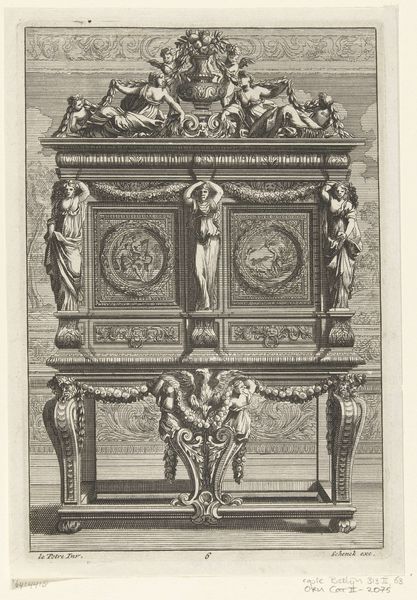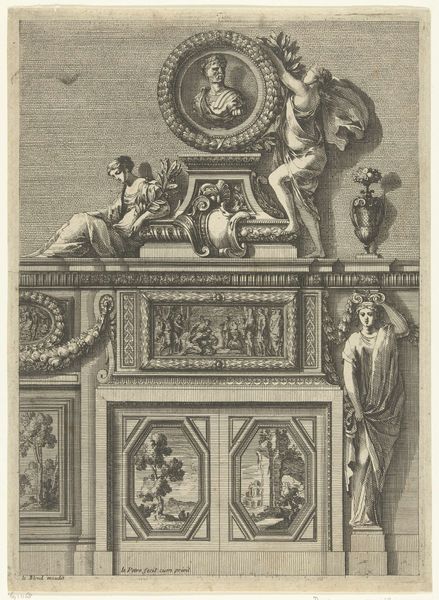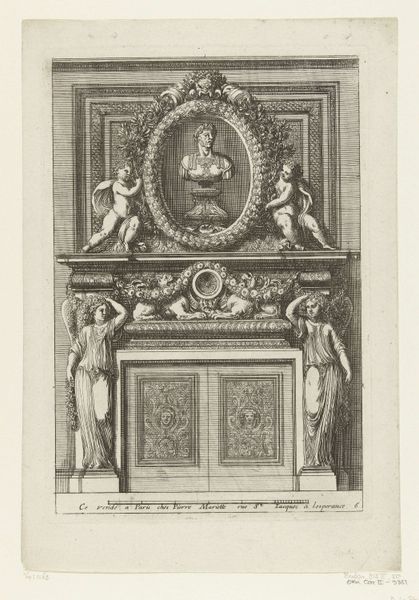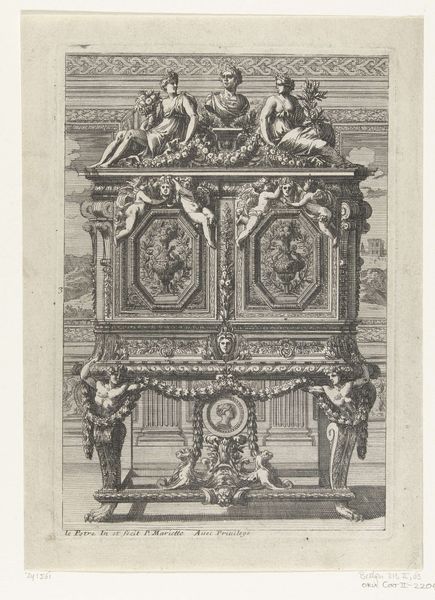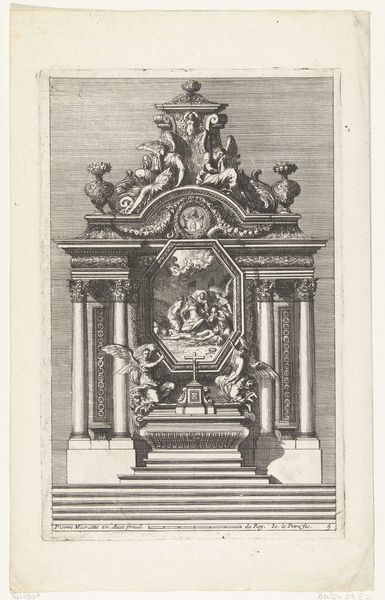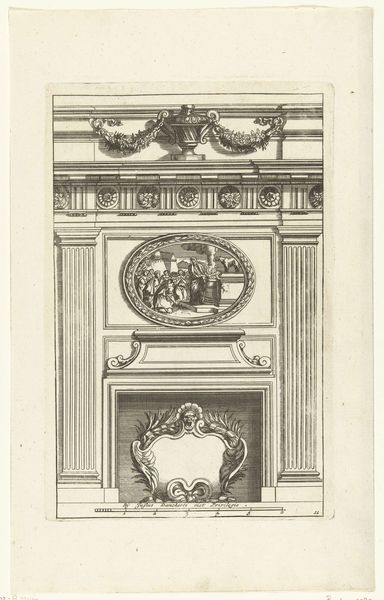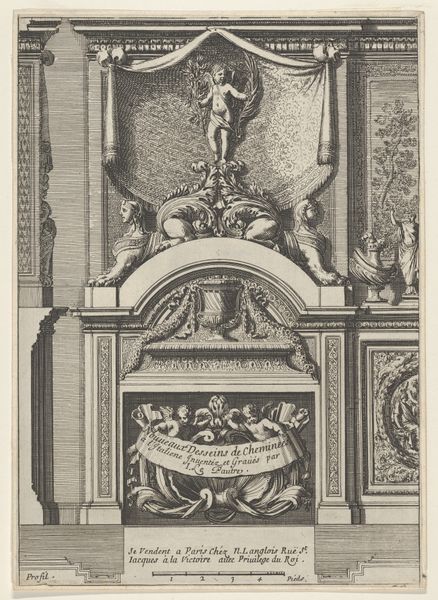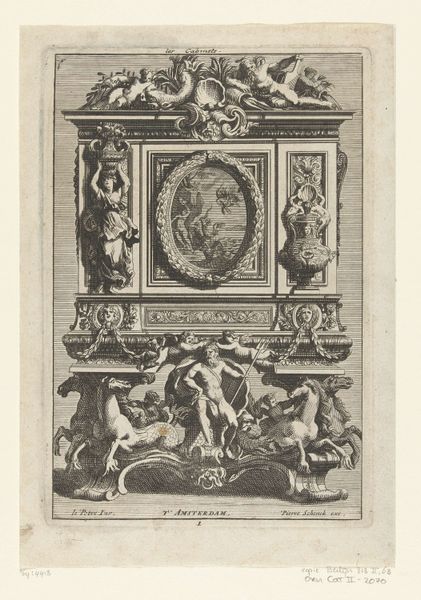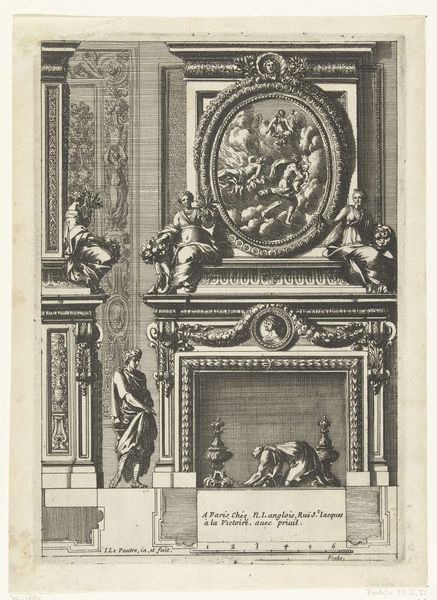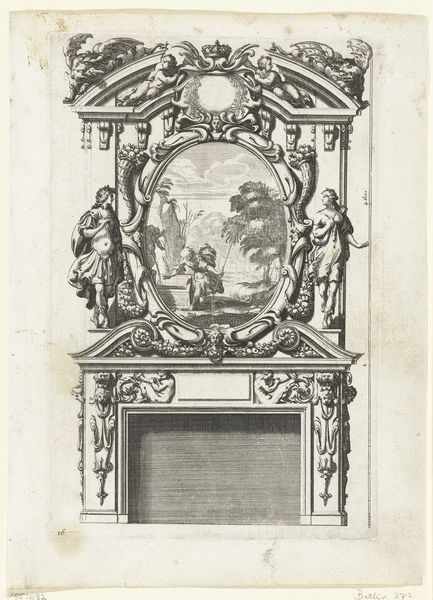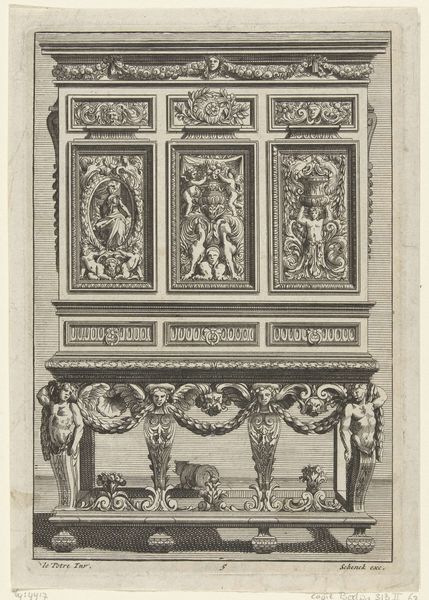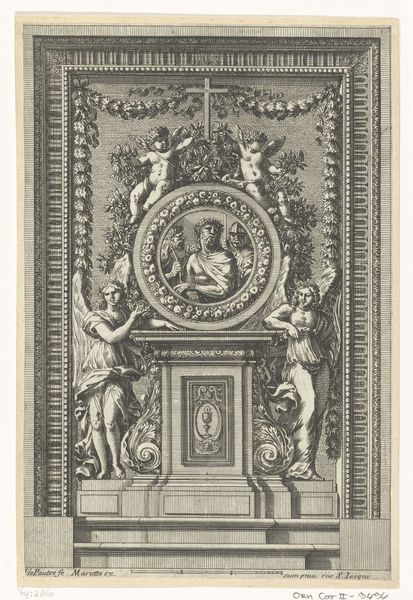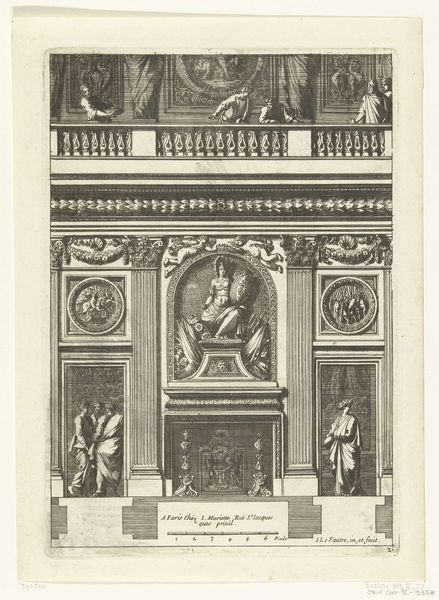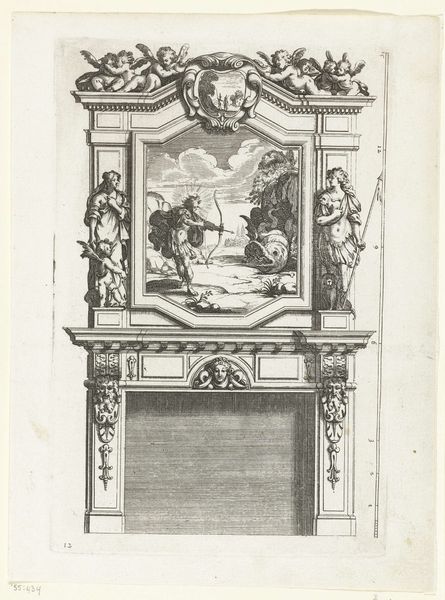
drawing, print, metal, ink, engraving
#
drawing
#
baroque
#
pen drawing
# print
#
metal
#
ink
#
engraving
Dimensions: height 211 mm, width 144 mm
Copyright: Rijks Museum: Open Domain
Curator: At first glance, I find this rather austere. All those sharp lines in black ink against the stark paper, it’s as if a storm is brewing in this room. Editor: The Rijksmuseum holds this print, titled "Kabinet met variant voor rechterhelft." Created circa 1680-1700 by an anonymous artist, it exemplifies Baroque design. We see pen drawing, ink, engraving – it's a complex layering of metal work meeting printed image. Curator: "Kabinet" implies a kind of curated personal world. Thinking about what such a cabinet signifies for the wealthy in this period is key. Who controlled its creation, who benefited? The decorative elements strike me as reinforcing strict hierarchies and perhaps religious dogma. Editor: Consider, too, the prominence given to figuration and symbols. Angels surround a crucifix at the crest, with portraiture on the doors themselves. The angelic forms echo classical depictions while heralding a distinct Catholic tradition of art and memory. And note the wreaths adorning the central portraits: Laurel perhaps signifying achievement and memory? Curator: Precisely. Whose stories were deemed worthy, what ideologies were enshrined in these portraits, in these angelic figures? We have to ask how access to such luxurious items reflects deeply embedded systemic inequality and biased symbolism. The politics of the Baroque are still impacting social inequalities of the 21st century. Editor: The material tells a complex narrative in itself; metal transformed, ink applied precisely, printed with repetition and a desire for mass dissemination. These visual elements speak not only of divinity but also of human power, memory, and ingenuity. It prompts questions of identity and its many manifestations. Curator: Indeed. What we see in these choices isn’t timeless taste. It reflects a very particular alignment of aesthetics, ideology, and social power. We're talking about visual politics. The artwork presents us with powerful ways that individuals can create meaning to communicate a desired social agenda. Editor: I agree. Approaching an artwork with that mindset allows a deeper engagement with the period, revealing not just artistry, but intentional expressions of culture.
Comments
No comments
Be the first to comment and join the conversation on the ultimate creative platform.
